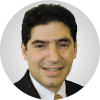In my last column (March 12),1 I wrote about what occurred when I attended a chiropractic conference in a state in which I do not hold a license to practice chiropractic.
There is more to the story, as licensure wasn't the only thing that the doctors treating people were missing; they also failed to perform almost any component of a clinical evaluation. By that I mean there was often (but not universally) no discussion with the "patient" of their current complaint, or any other type of history taken. There was also rarely any type of examination, and definitely no physical, orthopedic or neurological examination performed.
(Throughout this article, I call the person being adjusted the "patient," not just the patient. This is because not only wasn't the person managed clinically like a real patient when adjusted outside of the office, but neither was their care documented, as is ordinarily done.)
Some doctors palpated the "patient's" spine, but others only looked at leg lengths or did some muscle testing and then proceeded to adjust. What's more, I have good reason to believe that many of these doctors would never treat a patient in their office without radiographs, despite guidelines to the contrary.2
In a few cases, I know from the conversations that the doctor and "patient" were quite familiar with each other. Often they were chiropractic college classmates or friends for many years who now only see each other occasionally. Thus, giving the benefit of the doubt, one might view the adjustment I watched as a follow-up not needing a complete history and examination.
The "patient" at times was also a chiropractor, but not familiar to the doctor. One might assume, correctly or not, that the "patient" ought to know if it were OK to be adjusted. But again, there were times when the doctor clearly did not know the profession or even the name of the person they were treating. They just appeared to go about their business, adjusting willy-nilly whoever was lying on the table in front of them.
I know that at this conference there were speakers extolling the virtues of a through history and examination – which leads one to ask, are these procedures only needed in our office? Do we conduct a through history and examination of a patient just because the third-party payer expects it? Or do we do it because a regulatory authority requires it and, as in this instance, in the unlicensed practice of chiropractic the doctor does not have to meet minimum standards? Or do we do it because it is important in determining the patient's health status and the appropriateness of our interventions – a duty of clinical thoroughness we owe to the patient?
Clearly, we as a profession do not believe anymore, nor have we for many years, that an adjustment will cure all. We know there are patients for whom our primary, but not sole treatment modality, an adjustment, isn't appropriate. Do we have some foolproof and infallible heuristic we can apply so that in the hallway of a convention center, we know who to treat and who requires a more through history and exam outside the convention hall? I think not. We need to remember that the person we treat, even a colleague or employee, becomes a real patient once we decide to treat them.
I heard a chiropractic speaker one time say that he only adjusted about a third of his patients. Another chiropractor in the audience suggested there was something wrong with this doctor, who didn't seem to have faith in the value of an adjustment. The first doctor said that it was clear to him that the doctor who wanted him to adjust every patient was the one who was devoid of faith in the value of the adjustment.
If it is such a powerful treatment, then one shouldn't apply it ubiquitously; it should be preserved for use when its power is really needed. And if we would hold back adjusting someone in our offices until we properly evaluated them – then clearly our colleagues (and CAs) are of no less importance and likewise deserve a thorough clinical evaluation, even if at a convention or seminar.
As a sports chiropractor, a former member of the American Chiropractic Board of Sports Physicians and a former board member and present chairperson of the research commission of the International Federation of Sports Chiropractic (Fédération Internationale de Chiropratique du Sport– FICS), I know that a significant concern to sports chiropractors and these organizations is the ability of sports chiropractors to "travel to treat" – that is, to travel with a sports team and be legally allowed to treat the team members. These organizations have always stressed the importance of proper examination and documentation.
This kind of concern for the legalities of treating away from one's home state and proper clinical procedures (examination and documentation) needs to be universally applied; not just for legal reasons, but for the benefit of the patient, no matter how temporary the doctor/patient relationship exists. The fact that the major tools of our trade are attached to our bodies wherever we go doesn't mean we ought to use them willy-nilly.
References
- Perle S. "Practicing Away From the Office, Part 1." Dynamic Chiropractic, March 12, 2012.
- Bussieres AE, Taylor JA, Peterson C. Diagnostic imaging practice guidelines for musculoskeletal complaints in adults-an evidence-based approach-part 3: spinal disorders. J Manipulative Physiol Ther, 2008;31(1):33-88.
Click here for previous articles by Stephen M. Perle, DC, MS.





